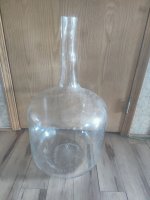dowser
Hero Member
- Jul 13, 2005
- 904
- 335
- Detector(s) used
- MINELAB 2100, L-Rods
- Primary Interest:
- All Treasure Hunting
I was wondering what type of detector or deep locating device on the market, could image, or sound off, on a target 3ft. deep in mineralized ground? What could the targets minimun size for detection at that depth be? And has anybody tried to find tongue nuggets over in the Stanton, Arizona area with such a device?
Amazon Forum Fav 👍
Upvote
0






